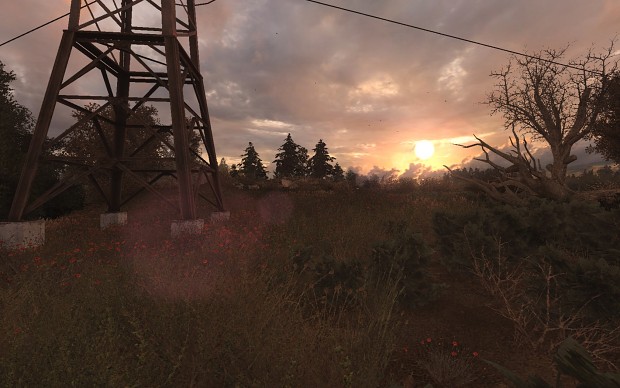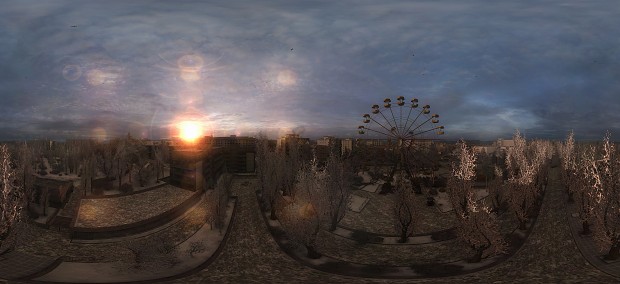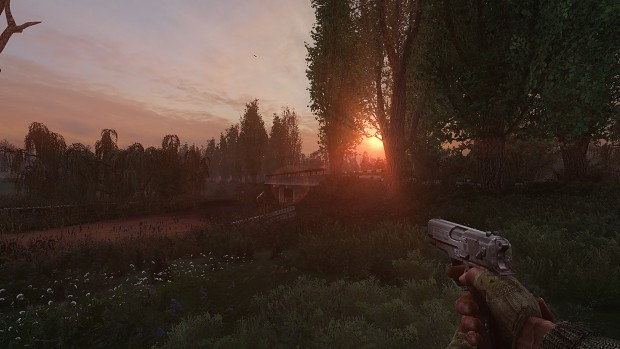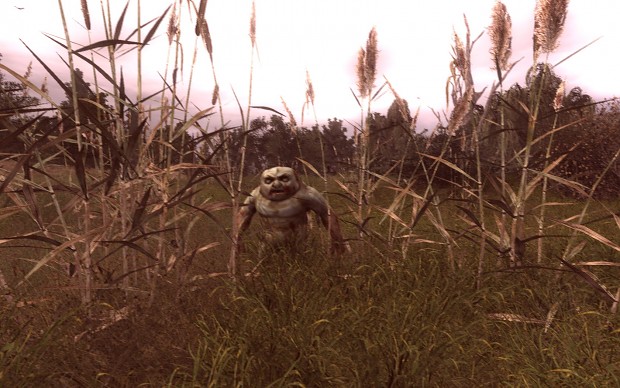
There is a scene in the classic Tarkovsky film Stalker, the game’s inspiration, where a fog rolls in and seems to change the landscape. The enigmatic Zone shifts around its guests, turning the familiar into the strange. Lost Alpha, an effort to recreate a version of Shadow of Chernobyl that never made it to the public, is like this. It’s a space you know and yet nothing is where you remember it. Those familiar with the games will wander in confidence only to find themselves lost.
In that sense Lost Alpha was a remix. Not an improved or ‘ideal’ version of the original Stalker but rather a reimagining of it. Familiar components were reshuffled. Areas were redesigned, made bigger. New ones were created entirely. The story was the same yet followed a different series of events on way to its conclusion. There were new set pieces littered throughout that gave some direction to a traditionally formless experience. It wasn’t always enjoyable, however. An adventure through Lost Alpha exposed why the creators probably dispensed with certain ideas, such as huge stretches of empty levels and unforgiving set pieces ill-suited to Stalker’s kind of gunplay. Though in making the familiar new again, Lost Alpha was certainly an interesting experience.

The Developer’s Cut, then, is an attempt to turn the original Lost Alpha into a polished, coherent experience. This starts with the visuals. This is easily the best-looking version of any Stalker game and certainly the most appealing for modern players. Time hasn’t been kind to the character models but the environments, lighting and weather still have the power to make you pause. Nowhere in gaming has ever captured my imagination quite like the Zone, the radioactive and twisted world surrounding this alternate universe Chernobyl. None of the ambience has been lost here. Washed out landscapes and dreary buildings remain but with a dose of lush foliage and high-res textures, the Zone is able to exist in the haunting beauty you recall instead of the now dated version from 2007.
The environments are much more expansive, too, as they were in the original version of Lost Alpha but now populated with entirely new NPCs and secrets. What they’ve brought back from the forgotten version of Shadow of Chernobyl is additional strangeness, like the weird alien growths clinging to the ceilings of abandoned shacks. Making the already-alluring Zone even stranger has made Lost Alpha a near definitive-experience for anyone looking to play the series.
The overall plot is the same. You wake up without your memory, with only a single objective logged in your PDA: ‘Kill the Strelok’. Finding out what the Strelok is and why you want to kill it is the bulk of the game as before, with similar beats. Yet there’s more detours and a lot more room to wander off the beaten path, finding loads of entirely optional areas and quests. More than ever before the Zone feels completely independent of you and your main quest. It’s a liberating feeling for anyone who has ever wanted to just lose themselves in the strange world of Stalker.

Stalker’s fundamentals remain absorbing. Anomalies litter the hills and navigating these physics-defying traps remains a novel pleasure. They seem a lot denser than before as well, requiring a lot of careful tiptoeing as you throw bolts a few paces ahead to test for unseen dangers. Learning the behaviour of the mutants, who roam freely under the control of the game’s much-lauded A-life simulation, is another important part of survival.
The new additions to the game make both these tasks exciting again. It manages to immerse you in this strange role within a strange world, a real delight in videogames. Much of what Lost Alpha did made the core of Stalker new again, restoring the mystery fans encountered the first time they stepped out into the Zone. Developer’s Cut now brings along a level of polish that makes it more consistently enjoyable. It’s still rough around the edges, with plenty of dodgy animations and awkward translation work. Still, for a free and standalone game, it’s a small price to pay for an experience that remains as novel as Stalker.
The biggest gaming news, reviews and hardware deals
Keep up to date with the most important stories and the best deals, as picked by the PC Gamer team.
There is also a much kinder difficulty curve, with a series of quests in the starting area offering a much nicer ease into the challenges of the Zone and making sure you’re well learned before you venture alone into the truly dangerous areas. This starts with a new NPC, encountered when you leave the starting bunker, who guides you through a few small quests and becomes your first ally.

Among the list of improvements are a few features taken from Call of Pripyat, including the very nuanced gunsmithing, enabling you a lot of control over your arsenal. Weapon customisation so often seems like one of those brainless additions in shooters but in Stalker being able to tailor your gear to your needs is transformative. Struggling to find the right ammo type for your weapon? Modify it so it takes something more common. In a world as harsh as the Zone, where resources can be few and far between, these options make your ability to survive feel more like an accomplishment. By the time your journey is over, you feel like you’ve gone from rookie to professional. You see subtleties to enemy behaviour and environmental cues that seemed invisible at the start.
If so much of this sounds familiar it’s because Lost Alpha doesn’t change the fundamentals. This is Stalker as you know and love. The original Lost Alpha release was an attempt to recreate a discarded version of the game, to as exact a specification as they could but the Developer’s Cut is more creator Dezowave’s own beast. It brings a whole host of new surprises that make it a great return for fans and an endlessly deep treat for newcomers. If you’ve never played an entry in the series, Lost Alpha—Developer’s Cut is a tremendous place to start. It’s huge, it’s unique, it’s standalone and it’s completely free.

